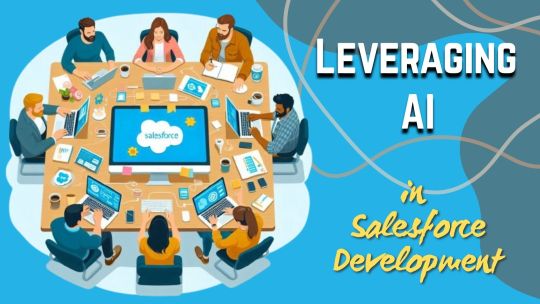#Low Code Ai
Explore tagged Tumblr posts
Text
0 notes
Text
You know the saddest thing abt Mhin is that they keep their distance from everyone bc they’re scared they’ll get hurt but given all of the others are monsters both literally and metaphorically they’re technically dodging like a ton of bullets
#mhin touchstarved#touchstarved#touchstarved game#MHIN MY BELOVED#Hate how their wariness of everyone (even themselves!!!) is low-key validated by the narrative#and by hate I mean love it on a story level since you can squeeze SO MUCH angst/dramatic irony on their route out of it#but at the same time feel so bad for them#Love how tragic every character is set up to be#tbh gonna go Mhin>Kuras>Leander>Vere>Ais at this point maybe#also hate to say it but they’re right about Ais and Vere even tho I love those two#Ais does do terrible things!! Mhin just doesn’t realize Kuras and Leander don’t judge bc they have crazy skeletons in their own closet lmao#I wonder if on Mhin’s route they come to see what terrible things Kuras has done and lose a bit of that admiration for him hmmm#since Mhin despite also being a terrible person at least seems to have a code? I think it’ll really really depend on#what Kuras’s Crime Against Humanity (and Monsters) ends up being
88 notes
·
View notes
Text
yk its just. so goddamn fun watching the rise of llms as an artist, writer *and* programmer. oh haha yeah the computers are gonna take over literally any potentially tolerable career i could have? cool. great. i cant wait
#like i dont think that llms will ever be able to fully take over those roles#not well anyway#but i dont think thatll stop corporations from trying to force them in there eventually!#who cares about low quality work when you dont have to pay creators right#i mean. i guess i could get a job as one of the guys who manually fix gpts shit ass generated code until businesses give up on ai#but christ that sounds depressing#anyway yeah. fuck computers#why do i have to be in three of the roles techbros are targeting#ben affleck smoking dot png#me.txt
3 notes
·
View notes
Text

drew this on my phone in the gallery app at like 4am i just cleaned it up + colored it in for funsies. their relationship means everything to me. caleb's magical girl transformation involves lots of holographic pixels and he is fucking pissed


bonus image accompanying the story from the tags

also i swear i do actually draw the other Veneer characters i'm just fixating on the scientists rn









in order left to right, top row to bottom row: Thrymr Orvyn, Leonardo James Bingham [Bing for short], Echo Adan, Jack Mako Hyder [former drowned corpse], Ike Olis, Bing (again) and Chase Allen [code name: Orion] with his pet parasite, Echo (again), Bing (again x2), and Jikan Diggory with Rose the cat
i guess jikan also counts under the scientist umbrella, but he's not crestfall...
#Veneer#Cord Motus#Caleb Oroitz#i call them magical girl transformations mostly as a joke but i mean.#I MEAN...#they get new color-coded outfits and hairstyles and magic powers. BASICALLY it is!#caleb pulls an m32 rotary grenade launcher from his wristwatch#that'll teach you for getting coffee on my fucking documentation again MOTUS#cord is a smoking burnt corpse in the family guy death pose with birds circling his head and spirals for eyes#[he wheezes out a cloud of smoke and then pops back up perfectly fine]#god i love the magic system so much. because you know. if i didn't... i could just change it lol#it's really easy to lose control of your magic if you lose control of your emotions. hence why caleb's eyes turn red in this.#because he angy#i mostly use it for gag moments because it's fun to do#like cord cry-laughing at the caleb impersonator who shows up at the college he works at and his eyes turning purple#like yeah that's not a normal human thing that happens but it's fine don't sweat it#like caleb had always been the kind of person who hated being famous so he rarely ever showed himself in public#so when he goes missing twenty years ago people just assume he's laying low as he does. crestfall never made a big deal of it#so everyone assumes everything's fine and that he's just being himself. it's not and he's not but... you know...#anyway bing and chase eventually break him out of ai slime hell and he reunites with cord after a long time and helps him break the memory#blocker on his chip that jerric put into place to protect him (because if Cord knew what happened to Caleb he would have gotten himself#killed trying to rescue him and ruined Jerric's faking of his death)#but he still refuses to go out into public especially since his random return would mean like. god. SO many invasive questions. ew.#nope. and so he just hangs out at RH after moving all his equipment from his house to the parking garage (then the abandoned subway tunnels#when the garage gets compromised) and hangs around Cord all day by using his magic to communicate via his eye implant#so the reason Cord cries laughing when he sees the fake Caleb is because he's taller than Cord. Caleb is a solid foot shorter than#him (he's 5'2'' Cord is 6'2'') and Cord was seeing digital Caleb standing next to the fake Caleb and the difference was staggering#so he starts laughing meanwhile Caleb is threatening his life which only makes him laugh harder. so yeah that's why his eyes went purple
4 notes
·
View notes
Text
From Data to Decisions: Empowering Teams with Databricks AI/BI
🚀 Unlock the Power of Data with Databricks AI/BI! 🚀 Imagine a world where your entire team can access data insights in real-time, without needing to be data experts. Databricks AI/BI is making this possible with powerful features like conversational AI
In today’s business world, data is abundant—coming from sources like customer interactions, sales metrics, and supply chain information. Yet many organizations still struggle to transform this data into actionable insights. Teams often face siloed systems, complex analytics processes, and delays that hinder timely, data-driven decisions. Databricks AI/BI was designed with these challenges in…
#AI/BI#artificial intelligence#BI tools#Business Intelligence#Conversational AI#Data Analytics#data democratization#Data Governance#Data Insights#Data Integration#Data Visualization#data-driven decisions#Databricks#finance#Genie AI assistant#healthcare#logistics#low-code dashboards#predictive analytics#self-service analytics
0 notes
Text
AI and Low-Code Drive Fast App Development Across APAC
A recent IDC InfoBrief, Mission-Critical Software, Delivered: Harnessing the Synergy of Low Code and GenAI, reveals that AI and low-code development platforms are driving rapid application development and modernization across the Asia-Pacific (APAC) region. Sponsored by OutSystems, the report highlights that 40% of net-new applications in APAC will incorporate generative AI (GenAI) by 2026,…
0 notes
Text

Leveraging AI in Salesforce Development
Artificial Intelligence (AI) is revolutionizing Salesforce development by infusing intelligence into traditional CRM processes. AI allows Salesforce to evolve from a static data management platform into a dynamic, insight-driven system that can predict, recommend, and automate key functions. With AI, Salesforce development is now more about building solutions that are not just reactive but proactive.
Know more at: https://www.cyberswift.com/blog/leveraging-ai-in-salesforce-development/
#generative ai in salesforce#salesforce ai cloud#salesforce einstein gpt#ai-powered crm solutions#bill cipher#salesforce automation with ai#predictive analytics in salesforce#ai-driven customer insights#ai-enhanced salesforce workflows#salesforce lightning and ai integration#chatbots and salesforce crm#salesforce consulting services#salesforce crm solutions#custom salesforce development#salesforce lightning development#salesforce app development#salesforce api integration#salesforce cloud services#salesforce automation solutions#salesforce migration services#salesforce support and maintenance#low-code salesforce development#ai-powered salesforce solutions#iot integration with salesforce#salesforce blockchain integration
0 notes
Text
Best Software Development Trends to Follow in 2024
Explore the best software development trends for 2024, including AI, low-code solutions, and cybersecurity, to elevate your business and stay competitive.
As we step into 2024, the software improvement panorama continues to conform swiftly, shaped by using technological improvements, changing person expectations, and rising enterprise needs. Staying ahead of these traits is critical for organizations aiming to remain aggressive and progressive. In this blog, we’ll explore the fine software development tendencies to comply with in 2024, specializing…
#Agile Development#ai#App Development#Cloud Computing#Custom Software#Cybersecurity#devops#Edge Computing#Enterprise Software#IoT#Low Code#Machine Learning#No Code#Product Testing#Software Development#Sustainability#UIUX Design#Web Development
0 notes
Text
The Human Impact of Generative AI
Shaping Tomorrow: How Generative AI Empowers People and Transforms Work

The Metaverse and Generative AI: Creating Immersive Experiences
Generative AI is swiftly transforming the landscape of numerous industries by enabling more efficient workflows and sparking once-impossible innovations. At the heart of this transformation is the capacity of generative AI to automate complex processes and generate new content, from visuals to code, thereby enhancing productivity and creative potential. This article sheds light on how generative AI is revolutionizing various sectors, improving communication through advanced natural language processing, personalizing experiences in healthcare, and even redefining content creation and software development.
The Power of Text-to-Image and Image-to-Image Generation
Generative AI technologies are redefining creativity and design by allowing for the seamless generation of visual content from textual descriptions. This capability accelerates the creative process and democratizes design capabilities, making them accessible to professionals without deep graphic design skills. Industries such as marketing and entertainment are reaping immense benefits from these advancements. For instance, graphic designers can now produce bespoke visuals in minutes, significantly reducing project turnaround times and allowing for greater scalability in creative projects, thereby enhancing business productivity.
This integration across business functions showcases the substantial efficiency gains that can be achieved, enabling companies to tailor their marketing materials quickly and in alignment with consumer preferences without requiring extensive manual effort.
Revolutionizing Software Development with Code Generation and Completion
Integrating generative AI into software development drastically enhances the efficiency and accuracy of coding processes. By automating mundane coding tasks, AI-powered tools free developers to focus on more complex and innovative aspects of software design. These advancements are not just about speeding up development but are transforming how software is created, tested, and deployed.
AI-Powered Coding Assistants
AI coding assistants like GitHub Copilot have been at the forefront of this transformation. According to a GitHub survey, developers using these AI tools report a 55% increase in productivity. These assistants leverage vast code repositories to offer real-time suggestions and complete lines of code, significantly speeding up the development process and reducing bugs.
For example, GitHub Copilot acts like a pair programmer, suggesting entire blocks of code based on natural language comments or a few lines of code. This greatly speeds up the coding process and enhances code quality by suggesting industry-standard practices and reducing errors.
Startups Leading the Charge in AI-Driven Code Generation
Several innovative startups are making waves in this space by focusing on specific niches of the development process
Tabnine - This tool uses machine learning to provide code completions for developers, supporting over a dozen programming languages. Its model learns from the codebase it's working on, offering tailored suggestions that improve over time.
Replit- Aimed at making coding more accessible, Replit provides a collaborative browser-based IDE with AI-powered coding assistance. It's particularly popular among educators and learners, democratizing access to coding tools and environments.
Codota- Like Tabnine, Codota offers intelligent code completions driven by AI. It integrates seamlessly with popular IDEs like IntelliJ and WebStorm, streamlining the development workflow by predicting needs and reducing repetitive coding tasks.
The Future of AI in Software Development
The trajectory of AI in software development points toward more integrated systems where AI tools assist with code and planning, testing, and deployment processes. These tools are expected to become more predictive, using historical data to guide development strategies and optimize team workflows.
By integrating AI into software development, the industry is seeing increased productivity and a shift in the developer's role from coder to innovator. As AI continues to evolve, the future of coding looks set to be more intuitive, creative, and, importantly, more efficient.
AI-Powered Content Creation: A New Era
The advent of generative AI is reshaping the landscape of content creation across multiple platforms. From crafting engaging blog posts to generating dynamic social media content and personalized emails, AI tools play a pivotal role in automating content generation, saving time, and maintaining a high standard of creativity and relevance.
Enhancing Productivity and Creativity
AI content generation tools are a boon for content creators, as they significantly reduce the time spent on content production. According to case studies from Jasper AI, thanks to AI assistance, content creators save an average of 3-4 hours per week. This time savings translates directly into increased productivity, allowing creators to focus more on strategy and less on the mechanics of content creation.
For instance, platforms like Jasper AI offer a range of content creation tools that automate the writing process, from first draft to finished piece, while ensuring the content is engaging and tailored to the audience. Similarly, Writesonic provides tools to enhance marketing content, enabling businesses to produce ads, product descriptions, and marketing copy quickly and efficiently.
The Role of AI in Personalization
Beyond sheer output, AI's real power in content creation lies in its ability to personalize content. By analyzing user behavior and preference data, AI can tailor content to meet the nuanced demands of different audience segments. This level of personalization is particularly effective in marketing, where tailored content can significantly improve engagement rates and conversions.
Navigating Challenges
While the benefits are substantial, using AI in content creation also presents challenges, particularly regarding the originality and authenticity of the content. To address this, many AI platforms are incorporating advanced algorithms that generate content and ensure that it is unique and aligns with the brand's voice. Additionally, a growing emphasis is on blending human creativity with AI efficiency to produce innovative and genuine content.
AI Tools Transforming the Content Landscape
Several other tools and platforms are at the forefront of this AI-driven content revolution
Grammarly leverages AI to correct grammar and enhance the tone and clarity of the text, making it more effective and audience-appropriate.
Articoolo creates unique textual content from scratch, simulating a human writer and significantly shortening the content development cycle
Advancements in Natural Language Processing: Understanding and Communicating Better
Natural language processing (NLP) is the heart of generative AI, enabling machines to understand and interact using human language. This technology has seen significant advancements in recent years, leading to improved communication tools and a deeper understanding of textual data across industries.
Enhanced Communication Tools
One of the most visible impacts of advanced NLP is improving communication tools such as chatbots and virtual assistants. These AI-driven systems can now handle complex conversations, understand nuances, and provide increasingly indistinguishable responses from human interactions. For instance, chatbots powered by sophisticated NLP models are used in customer service to respond instantly to customer inquiries, reducing wait times and improving customer satisfaction.
Sentiment Analysis and Translation
NLP is also pivotal in sentiment analysis, where AI models assess the emotional tone behind text data. This is incredibly useful for businesses to gauge customer sentiment from reviews, social media posts, and other interactions. Machine translation has benefited immensely from NLP, enabling more accurate and context-aware translations that are crucial in global communications.
Real-World Applications of NLP
Customer Service : AI-enhanced chatbots can now provide 24/7 customer service, precisely handling inquiries and redirecting complex issues to human operators.
Market Analysis : NLP tools analyze vast amounts of data from market research to provide insights into consumer behavior, trends, and preferences.
Healthcare : In the medical field, NLP is used to interpret and classify clinical documentation, helping in faster and more accurate patient diagnoses.
Cutting-Edge NLP Technologies
Platforms like OpenAI's GPT -4 are leading the charge in NLP technology. This model has set new standards for language models with its ability to generate coherent and contextually relevant text based on minimal input. This model and others like it are enhancing existing applications and paving the way for new uses that were previously unimaginable.
Challenges and Ethical Considerations
Despite its advancements, NLP faces challenges, particularly in bias and ethical use. Ensuring that AI systems do not perpetuate existing biases in training data is a significant concern that requires ongoing attention and refinement. Moreover, as NLP systems become more integrated into daily activities, privacy and data security questions become more pressing.
Generative AI in Healthcare and Drug Discovery: Accelerating Progress
Accelerating Drug Discovery
One of AI's most impactful applications in healthcare is accelerating the drug discovery process. Traditional drug development is notoriously time-consuming and costly, often taking over a decade and billions of dollars to bring a new drug to market. AI models can predict the effectiveness of compounds much faster than traditional experimental methods, reducing the time and financial investments required. For example, AI systems can simulate the interaction between drugs and biological targets to identify promising candidates for further development, thereby streamlining the early stages of drug discovery.
A McKinsey report highlights that AI has the potential to halve the time required for drug discovery, suggesting a reduction in timelines from 10 years to just five years. This not only speeds up the availability of new medications but also significantly cuts down on R&D costs.
Personalized Medicine
Beyond drug discovery, generative AI enhances personalized medicine, where treatments are tailored to individual patients. By analyzing genetic data, AI systems can predict how patients respond to various therapies, allowing for more personalized and effective care. This approach is particularly transformative in fields like oncology, where understanding the specific genetic makeup of a tumor can guide more targeted and effective treatment strategies.
AI in Medical Imaging
Another critical area where AI is making strides is in medical imaging. AI algorithms can process images faster and often more accurately than human radiologists, identifying subtle patterns that might be overlooked. Tools like Google Health's AI model for breast cancer screening, which has been shown to improve the accuracy of detecting breast cancer in mammograms, exemplify the potential of AI to enhance diagnostic accuracy and improve patient outcomes
Ethical Considerations and Challenges
While the benefits are substantial, integrating AI in healthcare raises significant ethical and privacy concerns. Data security, consent for using personal medical data, and ensuring AI does not perpetuate existing healthcare disparities must be addressed. These challenges require robust regulatory frameworks and ongoing oversight to ensure that the benefits of AI in healthcare are realized without compromising patient trust or safety.
AI-Driven Personalization: Tailoring Experiences for Maximum Impact
Artificial intelligence significantly enhances personalization across various sectors, transforming how services and content are delivered to meet individual preferences and needs. This customization is crucial in e-commerce, education, and media, where tailored experiences can significantly boost user engagement and satisfaction.
Personalized Recommendations
In e-commerce, AI-driven personalization engines analyze user behavior, past purchases, and browsing history to recommend products that users are more likely to purchase. Companies like Amazon and Netflix are renowned for using AI to generate personalized recommendations, which enhances the user experience and increases revenue through improved conversion rates.
Customized Learning Experiences
AI personalization in education revolutionizes learning by adapting content to fit each student's learning pace and style. Platforms like Khan Academy use AI to offer a customized learning path for each user, making education more accessible and effective by addressing individual learning needs and preferences. This approach helps identify areas where students struggle and provide targeted exercises to improve their understanding and retention of the subject matter.
Personalized AI-Powered Content Creation
AI is also making strides in personalized content creation. Tools like Grammarly and Quill Bot tailor writing aids to the user's style and preferences, improving written communication's clarity, tone, and grammaticality. This personalization enhances the writing process and ensures the content effectively conveys the intended message.
Business Benefits
Personalization can lead to significant business benefits, including increased customer loyalty and spending. A study by Deloitte found that companies that leverage consumer behavior insights through personalization see revenue increase by 6% to 10%, which is two to three times higher than those that don't. Personalized marketing campaigns ensure that customers receive messages that resonate with their specific needs and preferences, greatly enhancing the effectiveness of marketing efforts.
Democratizing Development: Low-Code/No-Code Platforms
The rise of low-code and no-code platforms marks a significant shift in how software and applications are developed. These platforms democratize the ability to build complex systems without extensive programming knowledge. This technology enables a broader range of people, including those without formal coding expertise, to create applications, automate workflows, and contribute to digital transformation efforts within their organizations.
Empowering Non-Technical Users
Low-code and no-code platforms such as Microsoft PowerApps, Google AppSheet, and Bubble empower non-technical users to build applications through intuitive graphical user interfaces. These platforms provide drag-and-drop components, pre-built templates, and simple logic formulas, making it easier for non-developers to bring their ideas to life quickly and efficiently.
Reducing Development Time and Costs
The impact of these platforms on development time and cost is profound. By simplifying the development process, low-code and no-code platforms can reduce the time to develop and deploy applications by up to 90%. This reduction accelerates innovation within companies and significantly cuts costs associated with traditional software development, such as hiring specialized development staff and lengthy project timelines.
Enhancing Business Agility
Companies utilizing low-code/no-code platforms can enhance their agility by quickly adapting to changing market conditions and business needs. These tools allow businesses to prototype and iterate on solutions rapidly, enabling a more responsive approach to customer needs and market dynamics.
Case Studies
Microsoft PowerApps has enabled companies to build custom business apps that connect to their data stored in the underlying data platform (Microsoft Dataverse) or in various online and on-premises data sources.
Bubble allows users to design interactive, multi-user apps for desktop and mobile browsers. Users can create web applications ranging from simple prototypes to complex SaaS applications without writing a single line of code.
Challenges and Considerations
While low-code and no-code platforms offer numerous benefits, they also present challenges, such as limited customization for complex requirements and potential issues with scaling as needs grow. Moreover, reliance on these platforms can lead to vendor lock-in, where businesses depend on the platform's capabilities and pricing structures.
The Future of Low-Code/No-Code
As these platforms mature, they are expected to become more robust, offering greater flexibility, integration options, and advanced features that cater to more complex development needs. The evolving landscape of low-code/no-code technology promises to blur the lines between technical and non-technical users, fostering a more inclusive environment for innovation across industries.
Scaling low-code and no-code platforms has inherent limitations and challenges that can impact their effectiveness, especially as organizational needs grow and become more complex. Here's a closer look at some of these limitations and how they might affect the broader adoption and scalability of these platforms
Customization and Flexibility
Limited Customization: Low-code and no-code platforms offer significant ease of use and speed through pre-built templates and drag-and-drop interfaces. However, they often need more flexibility for more complex, customized solutions. Businesses may find that these platforms can only sometimes accommodate the specific requirements or unique processes that differentiate them from their competitors.
Integration Issues: As organizations scale, the need to integrate with other systems and data sources increases. Low-code and no-code platforms sometimes need help with complex integrations or more support for specific external APIs, limiting their utility in a fully integrated tech ecosystem.
Performance and Scalability
Performance Constraints: Applications built on low-code/no-code platforms can suffer performance issues as user numbers increase and data loads become heavier. These platforms may need to be optimized for high-performance scenarios, leading to slower response times and reduced user satisfaction.
Scalability Challenges: Scaling applications built with low-code/no-code tools can be problematic, especially when dealing with large volumes of data or high transaction rates. While some platforms are improving their capabilities in this area, there remains a significant gap compared to custom-developed applications.
Security and Compliance
Security Concerns: The ease of application development also comes with the risk of creating security vulnerabilities, particularly if the platform does not enforce strict security standards. Organizations must be vigilant about the security aspects of applications developed through low-code/no-code platforms, especially when handling sensitive data.
Compliance Issues: Regulatory compliance can also be a concern, as the automatic code generation and data handling procedures of low-code/no-code platforms might not automatically align with specific industry regulations, such as GDPR or HIPAA, requiring additional oversight to ensure compliance.
Maintenance and Support
Dependence on Vendors: Using low-code/no-code platforms often means relying on the vendor for updates, security patches, and new features. This dependence can lead to issues if the platform does not evolve in line with the latest technological developments or if vendor support is lacking.
Technical Debt: Applications built on low-code/no-code platforms can accumulate technical debt if not properly maintained. This can lead to increased costs and resources being diverted to manage and upgrade legacy systems initially developed to save time and money.
Moving Forward with Low-Code/No-Code
Despite these limitations, strategic use of low-code and no-code platforms can still benefit many organizations, especially when used for specific purposes where the advantages outweigh the drawbacks. Businesses should carefully evaluate their long-term needs and choose platforms with the best ease of use, flexibility, and scalability. Understanding these limitations will help organizations make informed decisions about when and how to incorporate low-code and no-code solutions into their IT strategy, ensuring they can maximize the benefits while mitigating potential downsides.
AI-Enabled Cybersecurity: Staying Ahead of Threats
Artificial intelligence (AI) has emerged as a crucial ally in the rapidly evolving cybersecurity landscape. With cyber threats becoming more sophisticated and frequent, AI technologies are pivotal in enhancing defenses by automating detection, response, and prevention strategies. This integration of AI in cybersecurity is not just a trend but a necessary evolution to cope with the scale and complexity of modern cyber threats.
Enhanced Threat Detection
AI excels in identifying patterns and anomalies, which makes it ideal for threat detection. Machine learning algorithms can analyze vast amounts of data from network traffic, logs, and past incidents to identify unusual behavior that may signify a security breach. This capability allows for real-time threat detection, significantly reducing the time between infiltration and response.
Automated Response Systems
Once a threat is detected, the speed of response is critical. AI-powered systems can respond to threats faster than human teams, automating certain responses to common types of attacks. Rapid response capability can mitigate the effects of attacks, stopping them before they spread throughout the network or result in significant data loss.
Vulnerability Management
AI also aids in vulnerability management by identifying weak points in the network before attackers can exploit them. By continuously scanning systems and software for vulnerabilities and comparing them against emerging threats, AI systems can prioritize vulnerabilities that pose the most immediate risk, guiding cybersecurity teams on where to focus their remediation efforts.
Predictive Capabilities
One of the most promising aspects of AI in cybersecurity is its predictive capabilities. By learning from historical data, AI can predict the types of attacks likely to occur, enabling organizations to prepare defenses proactively rather than reactively. This forward-looking approach helps maintain a stronger security posture and better preparation against potential threats.
Challenges and Ethical Considerations
While AI significantly enhances cybersecurity efforts, it raises privacy and ethical data use challenges. The vast amounts of data required to train AI models must be handled responsibly to ensure privacy protections are not compromised. Furthermore, as AI systems become more autonomous in making security decisions, establishing clear accountability for decisions made by AI is crucial.
Embracing the Future with Generative AI
As explored throughout this article, generative AI is not just a technological advancement but an exponential shift recasting industry models, enhancing human creativity, and redefining what is possible in the digital age. From revolutionizing content creation to reshaping software development and pushing the boundaries in healthcare, AI's impact is profound and far-reaching.
Advancements in natural language processing have improved how we interact with machines, making them more intuitive and responsive. In cybersecurity, AI's predictive capabilities are setting new standards for protection, staying one step ahead of evolving threats. Meanwhile, in the realms of personalization and education, AI is creating experiences that are more tailored and impactful than ever before. However, the journey does not end here. The future holds even greater potential as we continue to innovate and integrate AI into various facets of our lives and work. The opportunities to leverage AI for driving growth, efficiency, and creativity are limitless, and the time to act is now.
Engage with Coditude
Are you ready to harness the power of generative AI to transform your business? Connect with Coditude today and join us at the forefront of this exciting revolution. Our team of experts is dedicated to helping you explore the vast possibilities of AI, from developing custom AI solutions to integrating AI-driven processes into your existing systems. Whether you're looking to enhance your cybersecurity defenses, streamline your content creation, or tap into AI's powerful analytics for strategic insights, Coditude is here to guide you every step of the way. Let's build the future together—innovative, efficient, and brighter than ever.
#Generative AI#AI powered content creation#NLP#AI enabled cyber security#Metaverse#Generative AI technologies#AI in healthcare#AI in software development#Low code platform#AI enhanced communication#text to image generation#image to image generation
1 note
·
View note
Text
The Impact of AI on Enhancing Low-Code Platforms

In recent years, the integration of Artificial Intelligence (AI) with low-code platforms has revolutionized how businesses develop applications. Low-code platforms are celebrated for simplifying and speeding up the app development process by allowing users to build applications with minimal coding. When AI is combined with these platforms, it elevates their capabilities to a new level. This powerful synergy not only enhances the development experience but also delivers substantial value to both businesses and developers.
1. Enhanced Automation and Efficiency
AI-powered low-code platforms automate and streamline many aspects of app development. AI can handle repetitive tasks such as code generation, data entry, and testing, reducing the manual effort required from developers. This allows them to focus on more complex and creative tasks. By leveraging AI, platforms like Kovaion’s low-code solution can accelerate the development cycle and significantly boost productivity. Learn more about how Kovaion utilizes AI to enhance automation.
2. Smart Recommendations and Predictions
AI algorithms can analyze data and user behavior to provide intelligent recommendations and predictions. This is particularly valuable in low-code platforms, where users may not have extensive programming expertise. AI can suggest the most suitable components, layouts, and workflows based on specific project requirements. For instance, Kovaion’s low-code platform uses AI to offer tailored suggestions, ensuring that users make informed decisions while building effective applications. Explore more about how Kovaion optimizes development through AI-powered.
3. Improved User Experience
AI enhances the user experience (UX) by enabling more intuitive and adaptive interfaces. AI-driven chatbots and virtual assistants can be integrated into applications to provide real-time support to users. Additionally, AI analyzes user interactions to personalize app experiences, making them more engaging and relevant. Kovaion’s low-code platform incorporates AI to help users create advanced applications that cater to individual preferences. Dive deeper into how Kovaion improves UX using AI.
4. Enhanced Data Insights and Analytics
AI processes and analyzes vast amounts of data to generate actionable insights. In low-code platforms, this allows developers and business users to gain valuable insights into app performance, user behavior, and business metrics. AI-powered analytics tools can identify trends, detect anomalies, and provide recommendations for optimization. Kovaion’s platform leverages AI to offer comprehensive analytics, empowering businesses to make data-driven decisions.
5. Accelerated Innovation
AI enables rapid prototyping and iteration by automating the testing and debugging processes. Developers can quickly identify and resolve issues, test different scenarios, and validate features before deployment. This accelerates the innovation cycle, allowing businesses to bring new applications and features to market faster. Kovaion’s low-code platform integrates AI to support swift development, ensuring that users can adapt quickly to changing market demands.
6. Advanced Security Measures
Security is a critical concern in app development, and AI plays a significant role in enhancing it. AI algorithms can detect and respond to security threats in real-time, identify vulnerabilities, and protect sensitive data. By integrating AI into low-code platforms, developers can implement advanced security features that safeguard applications from potential risks. Kovaion’s platform uses AI to strengthen security measures, providing users with a robust development environment. Read more about AI-enhanced security at Kovaion.
7. Increased Accessibility
One of the key benefits of low-code platforms is their ability to democratize app development by enabling non-technical users to create applications. AI further enhances this accessibility by providing intelligent guidance and support throughout the development process. AI-powered tools assist users in designing, building, and deploying applications, even without extensive coding experience. Kovaion’s low-code platform exemplifies this approach by offering AI-driven features that empower users to create high-quality applications effortlessly.
Conclusion
The integration of AI with low-code platforms marks a significant leap forward in the app development landscape. By enhancing automation, providing smart recommendations, improving user experiences, and offering advanced analytics, AI adds immense value to these platforms. Kovaion’s low-code platform stands out by leveraging AI to deliver a powerful, user-friendly, and innovative development experience. As AI continues to evolve, its impact on low-code platforms will only grow, unlocking new possibilities for developers and businesses.
Embracing AI and low-code together will enable organizations to stay ahead of the curve, streamline their development processes, and build applications that meet today’s dynamic market demands. Discover how AI and low-code can transform your development process.
0 notes
Text
Are you a #𝐰𝐨𝐫𝐤𝐢𝐧𝐠𝐩𝐫𝐨𝐟𝐞𝐬𝐬𝐢𝐨𝐧𝐚𝐥 looking to elevate your system design skills through real-world challenges?
Join the 𝐂𝐨𝐬𝐦𝐨𝐜𝐥𝐨𝐮𝐝 𝐋𝐨𝐰 𝐂𝐨𝐝𝐞 𝐇𝐚𝐜𝐤𝐚𝐭𝐡𝐨𝐧 and showcase your expertise by building complex APIs and seamless workflows for production-grade applications. 𝐋𝐞𝐯𝐞𝐫𝐚𝐠𝐞 𝐂𝐨𝐬𝐦𝐨𝐜𝐥𝐨𝐮𝐝'𝐬 𝐩𝐨𝐰𝐞𝐫𝐟𝐮𝐥, 𝐧𝐨-𝐜𝐨𝐝𝐞 𝐛𝐚𝐜𝐤𝐞𝐧𝐝 𝐩𝐥𝐚𝐭𝐟𝐨𝐫𝐦 𝐭𝐨: 👉 Master system design principles via building your app’s backend in minutes 👉 Build and deploy production-ready applications in a matter of minutes 👉 Design complex APIs and end-to-end workflows in just 5 minutes 👉 Effortlessly model data flows, user interactions, and backend processes for AI applications with 100% customizable APIs 𝐒𝐞𝐢𝐳𝐞 𝐭𝐡𝐞 𝐨𝐩𝐩𝐨𝐫𝐭𝐮𝐧𝐢𝐭𝐲: 🎯 𝐉𝐨𝐛 𝐨𝐩𝐩𝐨𝐫𝐭𝐮𝐧𝐢𝐭𝐲 with the Cosmocloud Core Engineering Team 💰 A competitive 𝐩𝐫𝐢𝐳𝐞 𝐩𝐨𝐨𝐥 𝐨𝐟 $𝟏𝟒,𝟎𝟎𝟎 and exclusive MongoDB and Google for Developers swags 𝐃𝐨𝐧'𝐭 𝐦𝐢𝐬𝐬 𝐨𝐮𝐭 on this chance to enhance your skills, and network with industry peers. 📅 𝐑𝐞𝐠𝐢𝐬𝐭𝐞𝐫 𝐧𝐨𝐰 - https://whereuelevate.com/drills/cosmocloud-hackathon?w_ref=CWWXX9 Where U Elevate
1 note
·
View note
Text
A definitive Manual for Wellbeing, Wellness, and Diet Arranging
Wellbeing, Wellness, and Diet Arranging
Wellbeing, Wellness, and Diet Arranging It requires a methodology which incorporates customary activity, an arranged out diet, and a solid …

Wellbeing, Wellness, and Diet Arranging
#ai#ai code#ai generated#education#technology#health and wellness#wellbeing#weight loss diet#low cal diet#diet#fat loss#dieting#weight loss#losing weight#fitness#fit girls#fit beauty
1 note
·
View note
Text
Explore the future of blockchain with AI and no-code tools. Simplifying development and boosting innovation, this is the new era of decentralized technology.
#AI Algorithms#AI In Blockchain Development#AI-Driven Blockchain Solutions#Blockchain Development#Blockchain Solutions#Blockchain-Based Applications#Cloud-Based Low Code And No-Code Platforms#Implementation Of AI#Integrating AI Solutions#Integration Of AI And No-Code Platforms
0 notes
Text
#ecm#enterprise content management#process automation#data extraction#artificial intelligence#low code platform#intelligent systems#content services#ai/ml#NewgenONE
0 notes
Text
Exploring the Latest Trends in Software Development
Introduction The software is something like an industry whose development is ever-evolving with new technologies and changing market needs as the drivers. To this end, developers must keep abreast with current trends in their fields of operation to remain competitive and relevant. Read to continue .....
#analysis#science updates#tech news#technology#trends#adobe cloud#business tech#nvidia drive#science#tech trends#Software Solutions#Tags5G technology impact on software#Agile methodologies in software#AI in software development#AR and VR in development#blockchain technology in software#cloud-native development benefits#cybersecurity trends 2024#DevOps and CI/CD tools#emerging technologies in software development#future of software development#IoT and edge computing applications#latest software development trends#low-code development platforms#machine learning for developers#no-code development tools#popular programming languages#quantum computing in software#software development best practices#software development tools
0 notes
Text
Embrace the future with AI and no-code platforms revolutionizing blockchain. Learn how these technologies are reshaping the industry and creating endless opportunities.
#AI Algorithms#AI In Blockchain Development#AI-Driven Blockchain Solutions#Blockchain Development#Blockchain Solutions#Blockchain-Based Applications#Cloud-Based Low Code And No-Code Platforms#Implementation Of AI#Integrating AI Solutions#Integration Of AI And No-Code Platforms
0 notes